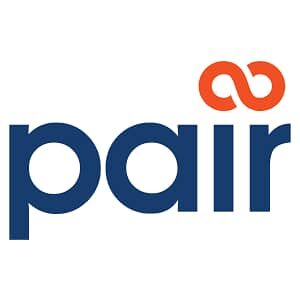
FACTSHEET: Making Student Loans More Affordable
FACTSHEET: Making Student Loans More Affordable
A postsecondary education is the single most important investment that Americans can make in their futures. Higher education results in higher earnings and a lower risk of unemployment, but for too many low- and middle-income families this essential rung on the ladder to opportunity and advancement is slipping out of reach. Over the past three decades, the average tuition at a public four-year college has more than tripled, while a typical family’s income has barely budged. More students than ever are relying on loans to pay for college. Today, 71 percent of those earning a bachelor’s degree graduate with debt, which averages $29,400. While most students are able to repay their loans, many feel burdened by debt, especially as they seek to start a family, buy a home, launch a business, or save for retirement.
The President and his Administration have a long track record of taking steps to make college more affordable and accessible for families. And as part of his year of action to expand opportunity for all Americans, the President is committed to building on these efforts by using his pen and his phone to make student debt more affordable and more manageable to repay.
Today the President will use the power of his pen to help millions of borrowers afford their student loan payments. He will sign a new Presidential Memorandum directing the Secretary of Education to propose regulations that would allow nearly 5 million additional federal direct student loan borrowers the opportunity to cap their student loan payments at 10 percent of their income. The Presidential Memorandum also outlines a series of new executive actions aimed to support federal student loan borrowers, especially for vulnerable borrowers who may be at greater risk of defaulting on their loans.
Today the President will also reiterate his call for the Senate to pass legislation that could help an estimated 25 million Americans refinance outstanding student loans at lower interest rates, the same as those available to federal student loan borrowers taking out loans this year. This move could save a typical student $2,000 over the life of his or her loans.
The Challenge of Student Debt: The challenges of managing student loan debt can lead some borrowers to fall behind on their loan payments and in some cases even default on their debt obligation, with such consequences as a damaged credit rating, losing their tax refund, or garnished wages. Because credit ratings are increasingly scrutinized in making employment offers, financing a home, or even opening a bank account, a damaged credit rating can further reduce borrowers’ ability to repay their loans. Today’s actions build on the Administration’s significant progress in creating flexible repayment options for borrowers and raising awareness about the steps borrowers can take to responsibly manage their debt.
Capping Student Loan Payments at 10 Percent of Income: Today, the President will direct the Secretary of Education to ensure that student loans remain affordable for all who borrowed federal direct loans as students by allowing them cap their payments at 10 percent of their monthly incomes. The Department will begin the process to amend its regulations this fall with a goal of making the new plan available to borrowers by December 2015.
With legislation passed by Congress and signed by the President in 2010 and regulations adopted by the Administration in 2012, most students taking out loans today can already cap their loan payments at 10 percent of their incomes. Monthly payments will be set on a sliding scale based upon income. Any remaining balance is forgiven after 20 years of payments, or 10 years for those in public service jobs. However, this Pay As You Earn (PAYE) option is not available to students with older loans (those who borrowed before October 2007 or who have not borrowed since October 2011), although they can access similar, less generous options. No existing repayment options will be affected, and the new repayment proposal will also aim to include new features to target the plan to struggling borrowers.
This executive action is expected to help up to 5 million borrowers who may be struggling with student loans today. For students that need to borrow to finance college, PAYE provides an important assurance that student loan debt will remain manageable. Because the PAYE plan is based in part on a borrower’s income after leaving school, it shares with students the risk of taking on debt to invest in higher education.
Many student loan borrowers are working and trying to responsibly make their monthly payments, but are nonetheless struggling with burdensome debt. For example, a 2009 graduate earning about $39,000 a year as a fourth year teacher, with student loan debt of $26,500, would have his or her initial monthly payments reduced by $126 under the President’s Pay As You Earn plan compared with monthly payments under the standard repayment plan and would see a reduction in annual loan payments of over $1,500.
Doing All We Can to Help Students Repay their Loans: The President today will also direct the Secretaries of Education and the Treasury to work together to do all they can to help borrowers manage their student loan debts. Specifically, the Departments will:
1) Strengthen Incentives for Loan Contractors to Serve Students Well: The Department of Education administers the federal student loan program through performance-based contracts with private companies awarded through a competitive process. Rather than specifying every step of the servicing process, as was done in the guaranteed loan program that ended in 2010, these contracts provide companies with incentives to find new and innovative ways to best serve students and taxpayers and to ensure that borrowers are repaying their loans. Today, the Department announced that it will renegotiate its contracts with federal loan servicers to strengthen financial incentives to help borrowers repay their loans on time, lower payments for servicers when loans enter delinquency or default, and increase the value of borrowers’ customer satisfaction when allocating new loan volume. These changes will improve the way that servicers are compensated to better ensure high-quality servicing for student loan borrowers.
2) Ensure Active-Duty Military Get the Relief They Are Entitled to: The Servicemember Civil Relief Act requires all lenders to cap interest rates on student loans – including federal student loans — at 6 percent for eligible servicemembers. The Department of Education already directs its loan servicers to match their student borrower portfolios against the Department of Defense’s database to identify eligible active-duty servicemembers. Now, the Department of Education will reduce those interest rates automatically for those eligible without the need for additional paperwork. It will also provide additional guidance to Federal Family Education Loan program servicers to provide for a similar streamlined process.
3) Work with the Private Sector to Promote Awareness of Repayment Options: The Secretary of the Treasury and the Secretary of Education will work with Intuit, Inc. and H&R Block, two of the U.S.’s largest tax preparation firms, to communicate information about federal student loan repayment options with millions of borrowers during the tax filing process — a time when people are thinking about their finances. The Administration is continuing its partnership with Intuit. through its TurboTax product, which serves around 28 million tax filers. The Administration will also form a new partnership with H&R Block, serving approximately 15 million tax filers through its 11,000 retail locations, and an additional 7 million tax filers through its digital tax products. Partnerships like these will give us the opportunity to provide information about federal student loan repayment, building upon our work during the most recent tax season by exploring different messages and the timing of information to best help borrowers in evaluating their federal loan repayment options.
In addition, the Administration will work with Intuit to explore ways to communicate with federal student loan borrowers through Intuit’s free personal financial management product, Mint.com. Mint is used by 15 million people for financial management and advice, and partnering with Mint provides the opportunity to communicate with their 15 million users about income-driven repayment options. Mint includes the capability to provide personalized information about federal loan repayment options, based upon the information that a user has already provided to Mint.
4) Use Innovative Communication Strategies to Help Vulnerable Borrowers: Too many borrowers are still unaware of the flexible repayment options currently available to them, especially when they run into difficulties in managing their payments. The Department of Education is redoubling its efforts to identify borrowers who may be struggling to repay and provide them with timely information about their options supporting them through the repayment process and helping them avoid or get out of default. Last year, the Department’s efforts led to more than 124,000 borrowers enrolling in an income-driven repayment plan like Income-Based Repayment or the Pay As You Earn plan Moving forward, the Department of Education will test new ways to reach 2.5 million borrowers with the greatest risk of encountering payment difficulty, such as borrowers who have left college without completing their education, missed their first loan payment, and those who have defaulted on low balances loans to get them back on track with their loan payments. The Department will also evaluate these strategies to identify which can be used on a larger scale and which are the most effective.
5) Promote Stronger Collaborations to Improve Information for Students and Families: All student borrowers are required to receive loan counseling when they first borrow federal student loans and when they leave school, but little is known about the effectiveness of these programs. Working with student debt researchers and student advocates, the Department of Education and the Department of Treasury will also develop and launch a pilot project to test the effectiveness of loan counseling resources, including the Department of Education’s Financial Awareness Counseling Tool. The lessons learned will be considered for future actions by the Department and shared with outside partners like the National Association of Student Financial Aid Administrators to improve loan counseling activities at colleges and universities throughout the country. Another way to reach student borrowers is by working with professional associations to provide customized information about repayment options. Today, the Administration is announcing its commitment to work with the American Federation of Teachers, National Education Association, American Association of Colleges of Nursing, American Association of Nurse Practitioners, American Nurses Association, American Association of Physician Assistants, Business Forward, City Year, National Association of Social Workers, Physician Assistants Education Association, SEIU and the YMCA of the USA to provide comprehensive information about repayment options and federal student aid resources that are available to them. Moving forward, the Administration will continue to engage organizations, institutions of higher education, and others to ensure that all borrowers have access to the resources and information they need to responsibly manage the repayment of their student loans.
Additional Actions to Reduce Indebtedness and Promote College Affordability: Helping Students and Families Access Education Tax Benefits. In addition to helping borrowers manage their student loan debt, the Department of Education and the Department of Treasury will also work together to educate students, families, financial aid administrators, and tax preparers to ensure that all students and families understand what education tax benefits they are eligible for and receive the benefits for which they qualify. In 2009, the President created the American Opportunity Tax Credit (AOTC), which provides up to $2,500 to help pay for each year of college. But the process of claiming education tax credits like the AOTC can be complex for many students, including for the 9 million students who receive Pell Grants, and hundreds of millions of dollars of education credits go unclaimed each year. To help address this complexity, the Department of Treasury will release a fact sheet clarifying how Pell Grant recipients may claim the AOTC.




















